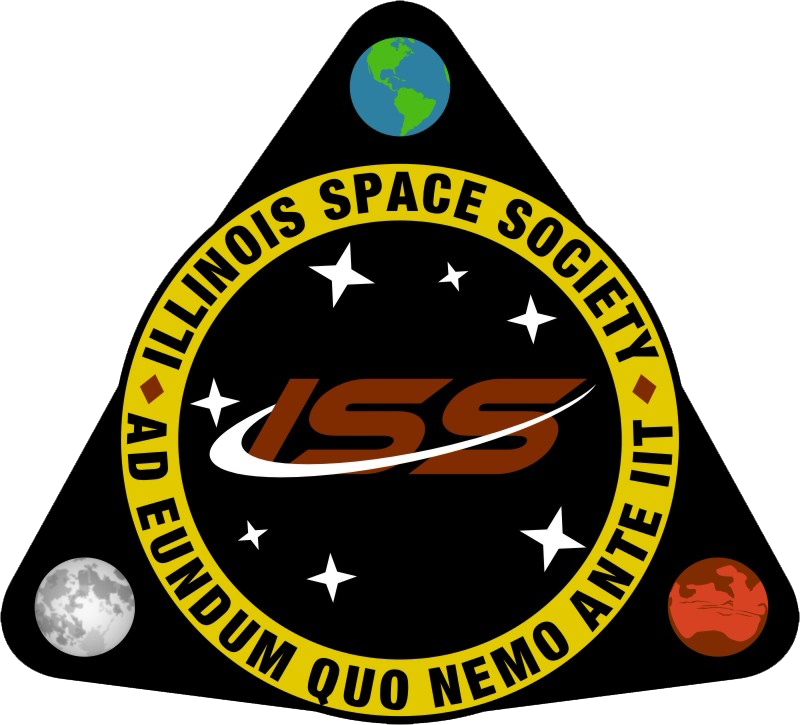Solid Results on Solid’s Hot Fire Test
November 28, 2023, 11:25 AM CDT/ By Robert Barthell
The Illinois Space Society's Solid Propulsion Team saw an SRAD engine of their creation spring into action and prove its functionality in a hot-fire test conducted this past Sunday. The engine clocked a burn time of 3.687 seconds, noticeably longer than expectations.
A solid rocket is fueled by grains, which are first heated to a temperature high enough that they start combusting. This creates a gas that is forced out and consumed in the propulsion process, generating thrust. In this student-designed engine built from scratch, the 54-millimeter fuel grains were made of potassium nitrate, similar to the gunpowder used in fireworks, and sorbitol. The engine burns from the inside out and expels the remnant smoke through its bottom.
The club's members spent months split into groups working on various aspects of the project, from manufacturing the fuel grains to testing the engine's structure. The team's initial step was to construct the grains. Then, a separate subteam created an aluminum case and nozzle, which was given to a testing team that assembled the stand capable of withstanding the force of the launch.
"It's fully student-researched and designed; that's what SRAD stands for," said John Larosa, the lead for the Testing subteam.
"It's a big accomplishment coming from previously launching commercial off-the-shelf motors. We were very happy, and this launch stood out because this was our first fully SRAD hot-fire. So, this time, we had our SRAD test, our SRAD fuel grains, and SRAD casing. This motor and this hot fire stand out because it's our first successful attempt," he added.
Building an engine from scratch requires a concentrated effort from various fields, and the end result must satisfy mutually disagreeable requirements. For example, the team relied heavily on computer simulations to balance pressure and performance. "Normally, we want to have as much propellant in there as possible, but as we add more propellant, our pressure increases, and when we increase pressure, that increases the risk that our motor will malfunction or possibly go up. Essentially, they're trade-offs," said John Kemp, the Simulations subteam lead.
"It's it's a lot more complicated than we thought it would be. There are a lot of small details and decisions that need to be made, a lot of calculations, and a lot of stress analysis. So I'd say we learned a lot about all of that," added Zach Dahhan, the Structures subteam lead.
Once set up, the launch crew required time to repair a damaged and "uncooperative" O-Ring, a flexible component that protects the onboard fuel from harsh exterior conditions and ensures that none leaks out. This delayed the launch, though a crowd of student builders unfolded their chairs and braved the bitter November winds to see their creation roar to life.
Solid Propulsion’s Hot Fire
After a loud sizzle, smoke burst from the engine and headed straight towards the spectators, who stood 50 feet away. Initial reactions were jubilant, though more scrutinous analysis of the launch's physical characteristics left certain things to be desired - that being, the engine's recorded average thrust of 44.4 N did not reach the sheer power that was hoped for.
"During the motor burn, the top CAD piece of the test stand started to melt at the connection points due to being secured to the radial bolts instead of the blue tube. No major damage was caused to the piece, but for the future, the CAD part will be secured to the blue tube and not the radial bolts," read a post-launch report authored by the team.
"We are happy after this launch because we couldn't get data from our last launch," noted Larosa.
"There were some problems at this launch. Looking at the data afterward, we realized that we couldn't produce as much thrust as we had, and I think it burned a little longer. So we're going to start to look into why that could have been," he added, noting that this process involves physically opening the rocket and examining its interior long after it has fired.
Kemp added that the team will return to more simulation analysis and adjust more variables to produce a more accurate end result model for the next launch.
Nevertheless, the leads pointed to the personal and professional growth they have experienced working as a team.
"Some other people built the test stand, so we had to dissect the stand and get a better understanding of it. More of the knowledge of the test stand was with older members, and now with newer members, we were able to learn a lot more about the wiring and electronics of the test stand while doing some of this stuff," Larosa said.
Dahhan recalls that the team was rather shy and reluctant to interact with each other when the project began last year, which gradually changed. "Throughout the year, we got more comfortable with each other, got more comfortable putting our own ideas and being able to actually share ideas and grow," he said.
"[My position] helped me to grow as a leader and an engineer, being able to make decisions and foster a sense of teamwork within our group. But also, I'm able to connect with our members better. I'm able to sit down and help them with what they're working on and learn as we go along," he added.
Furthermore, his sights are set on the team’s next project, BAM, a motor of immense size which he mentions calls for significant upgrades in structure and power.
"It's going to be even better. We're going to have a larger motor. We're going to have some carbon fiber, and that's a whole step up from what we had before. So I'm really excited for what's in the future."
